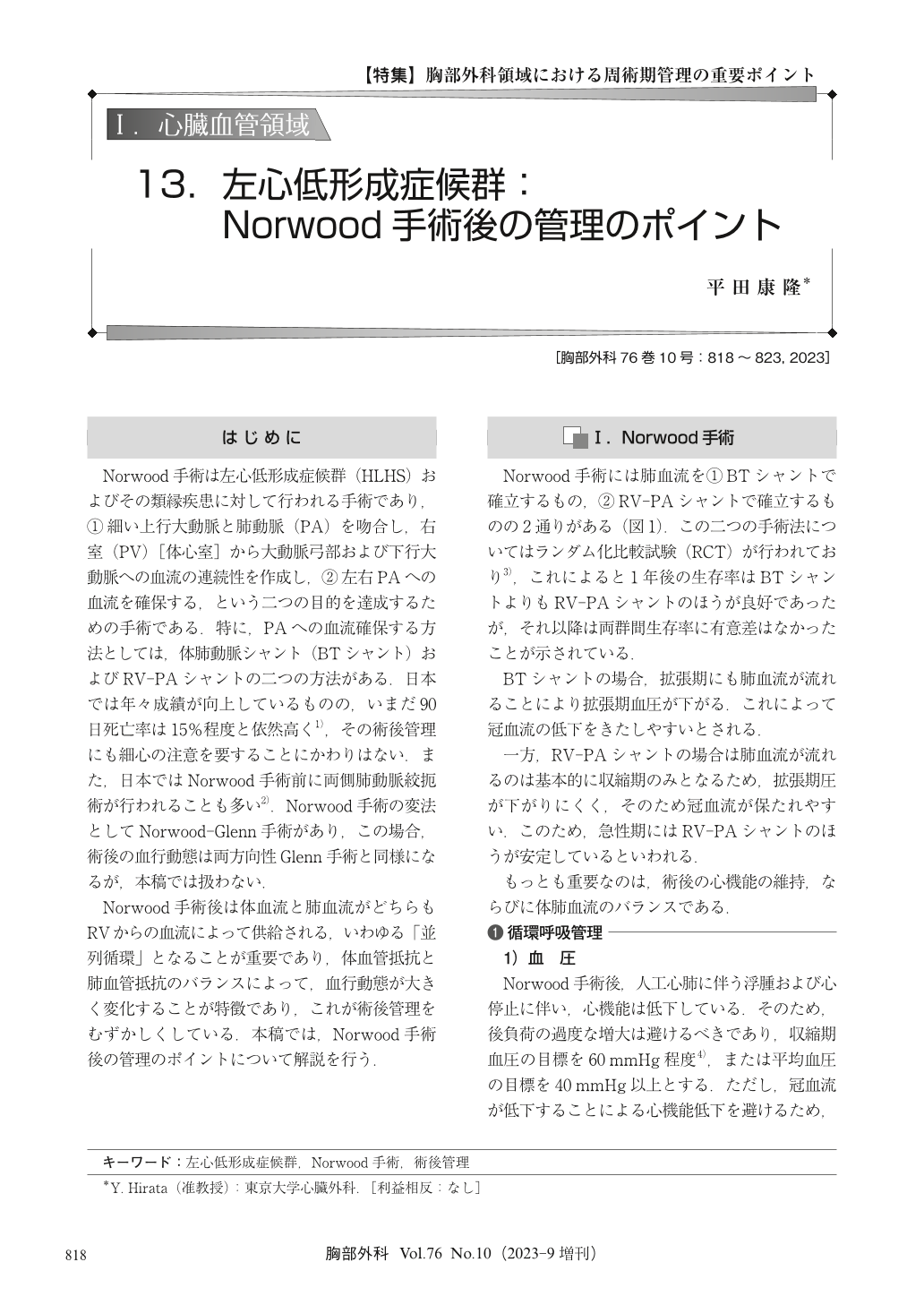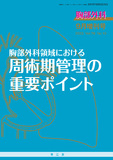Japanese
English
- 有料閲覧
- Abstract 文献概要
- 1ページ目 Look Inside
- 参考文献 Reference
Norwood手術は左心低形成症候群(HLHS)およびその類縁疾患に対して行われる手術であり,①細い上行大動脈と肺動脈(PA)を吻合し,右室(PV)[体心室]から大動脈弓部および下行大動脈への血流の連続性を作成し,②左右PAへの血流を確保する,という二つの目的を達成するための手術である.特に,PAへの血流確保する方法としては,体肺動脈シャント(BTシャント)およびRV-PAシャントの二つの方法がある.日本では年々成績が向上しているものの,いまだ90日死亡率は15%程度と依然高く1),その術後管理にも細心の注意を要することにかわりはない.また,日本ではNorwood手術前に両側肺動脈絞扼術が行われることも多い2).Norwood手術の変法としてNorwood-Glenn手術があり,この場合,術後の血行動態は両方向性Glenn手術と同様になるが,本稿では扱わない.
The Norwood procedure still has a high mortality rate of about 15%, and the surgery and its postoperative management require the meticulous care. Of particular importance is maintaining an appropriate balance between systemic and pulmonary blood flow in the face of ever-changing circulatory conditions, for which various parameters must be understood. These parameters include systolic blood pressure, diastolic blood pressure, mean blood pressure, central venous pressure, oxygen saturation, venous oxygen saturation, lactate, and urine output. I believe that one of the keys to improving outcomes is to make full use of these parameters and to administer appropriate drugs and procedures at the right time. In particular, the pulmonary to body blood flow ratio in the immediate postoperative state and in the stable postoperative state are different, and it is important to predict these while ultimately creating the best circulation for the patient.

© Nankodo Co., Ltd., 2023


